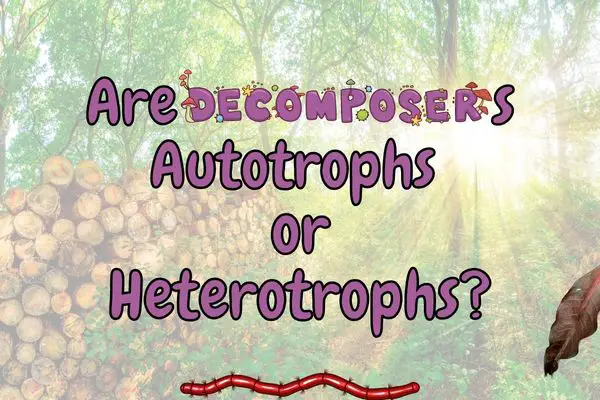Decomposers are heterotrophs because they feed on the organic waste from other organisms. Heterotrophs feed on other organisms, while autotrophs produce their own food through photosynthesis or chemosynthesis.
While all decomposers are heterotrophs, certain autotrophs play an important role in the decomposition process by converting decomposed nutrients into compounds that can be absorbed by plants.
Decomposers can be divided into detritivores and true decomposers. Detritivores, like earthworms and certain insects, feed on fragments of organic waste and break them down into smaller pieces.
While detritivores certainly help the decomposition process, they do not carry it to the end – as true decomposers do!
True decomposers, like bacteria and fungi, break down organic waste into inorganic nutrients that autotrophs can absorb.
By recycling nutrients in the environment, decomposers play an important role in the carbon cycle.
Contents
Why are decomposers classified as heterotrophic?
Decomposers are classified as heterotrophic because they feed on other organisms.
Heterotrophs, or consumers, are organisms that get their chemical energy from eating and digesting other organisms, while autotrophs generate their own chemical energy from the environment.
Plants, algae, and cyanobacteria get their energy from the sun through photosynthesis.
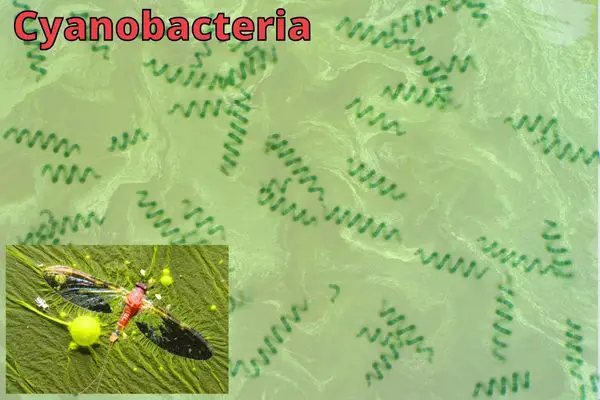
They use water and carbon dioxide to produce energy sources such as cellulose and carbohydrates.
Chemoautotrophic bacteria get their energy by breaking down chemical bonds
How do decomposers get their energy?
Decomposers get their energy by consuming dead plant matter, animal carcasses, or feces. detritivores that decompose plant matter include earthworms, cockroaches, woodlice, insect larvae, and wood-decaying fungi.
You can find these organisms on the forest floor or in a compost heap. Decomposers that feed on animal carcasses include carrion flies, putrefying bacteria, and cadaver mold. Larger scavengers, like jackals and vultures, are not considered decomposers but tertiary or quaternary consumers.
Decomposers that feed on feces include dung beetles, fly larvae, bacteria, and dung-loving fungi.
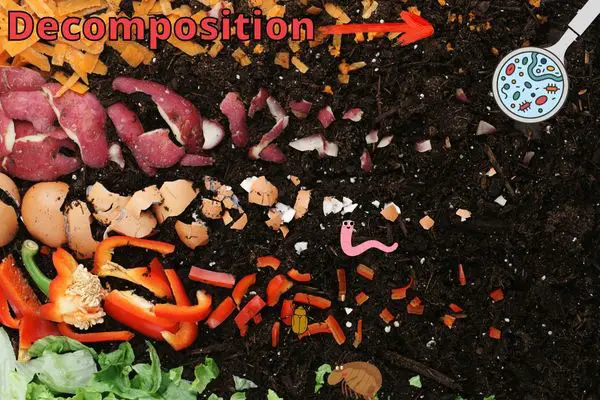
Most decomposers need oxygen to function. In the absence of oxygen, such as inside air-tight containers or deep underwater, anaerobic bacteria are responsible for decomposition.
Under these oxygen-deprived conditions the anaerobic decomposition is less effective and releases foul-smelling and toxic chemicals.
This is why garden waste stored in a plastic bag smells much worse, compared to a well-ventilated compost heap!
Do decomposers release carbon dioxide?
Decomposers, like all heterotrophs, release carbon dioxide and water as part of their respiration. The carbon cycle starts when autotrophs absorb carbon dioxide from the atmosphere to make glucose during photosynthesis1.
Animals then eat the plants (autotrophs), using some of the carbon to grow and maintain their body tissues and releasing the rest into the atmosphere via respiration.
When animals eat other animals, the carbon from their bodies moves from one organism to the next. When plants and animals die, decomposers release the carbon dioxide captured in their bodies into the atmosphere.
Decomposers can break down tough carbon-based compounds, like chitin and cellulose2, that other heterotrophs cannot digest, releasing the carbon dioxide back into the environment.
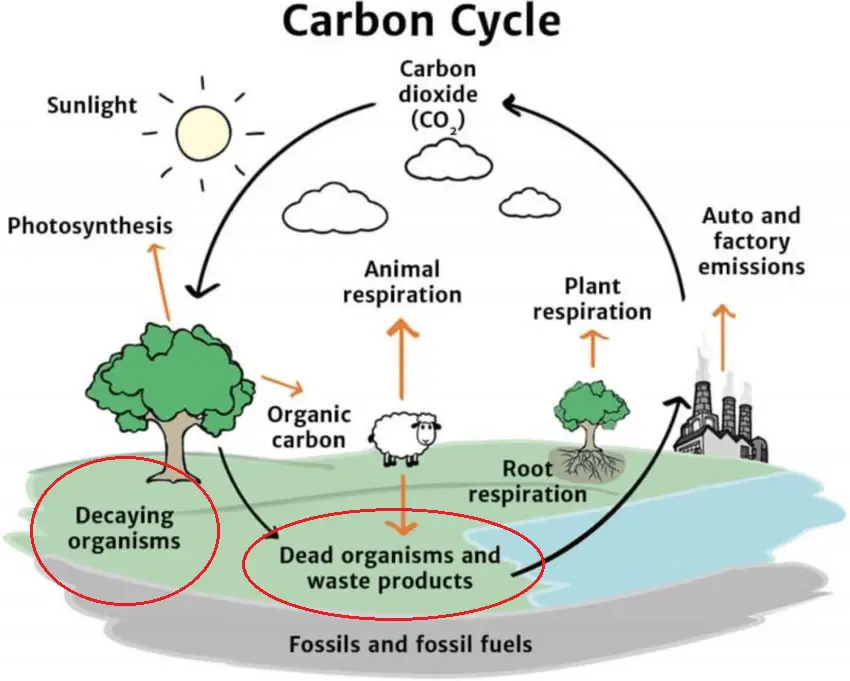
When decomposers get eaten by other organisms, they provide a source of carbon to those organisms.
Without decomposers, the carbon from dead plants and animals would remain trapped inside their bodies. In the permafrost, conditions are too cold for decomposers to function. Many animal carcasses remain perfectly preserved inside the permafrost3.
Mammoth carcasses from 1.6 million years ago were so well preserved that scientists could analyze their DNA4 and a 32 000-year-old seed was successfully germinated5.
As the climate warms and the permafrost starts to melt, this plant and animal matter starts to decompose, releasing carbon dioxide into the atmosphere. In recent years many unexplained craters have been found in the Siberian permafrost.
One explanation is that these are formed by underground gas build-up6.
Organic material trapped in underground pockets start to undergo decomposition, releasing methane gas and carbon dioxide which can cause big explosions when they break through the frozen layer covering the ground.
Are decomposers also consumers?
Yes! Because decomposers are heterotrophs, they are a type of consumer.
The different types of consumers include herbivores, carnivores, omnivores, and decomposers.
Herbivores are primary consumers since they only eat producers (plants).
Carnivores are secondary, or higher, consumers because they eat other consumers (animals).
Omnivores can be primary or secondary consumers because they eat both plant and animal matter.
Decomposers can be primary, secondary, or higher consumers, depending on what they eat.
Some decomposers have a specialized diet, for example, wood-decay fungi only feed on wood and dung beetles only eat feces, whereas other decomposers, like ants and cockroaches, are generalists.
Are all decomposers heterotrophs?
Yes. All decomposers are heterotrophs. However, many autotrophic bacteria play a crucial role in the decomposition process by breaking down inorganic components of feces and decomposing matter into a form that can be utilized by producers.
For example, nitrifying bacteria break down ammonium compounds in soil2 and feces7 to nitrite and then to nitrate, which can be absorbed by plants.
Since ammonium is an inorganic substance, nitrifying bacteria are chemoautotrophs instead of heterotrophs and therefore technically not decomposers.
In the deep sea, sulfur-loving bacteria break down the inorganic sulfur compounds from decomposing bones.8
Can plants be decomposers?
No, plants produce their own energy and carbon from sunlight and carbon dioxide and are, therefore, per definition, producers.
Plants like the grass of a lawn or trees in the forest are not decomposers because they rely exclusively on other organisms to provide them with inorganic nutrients like nitrogen, phosphorous, and sodium.
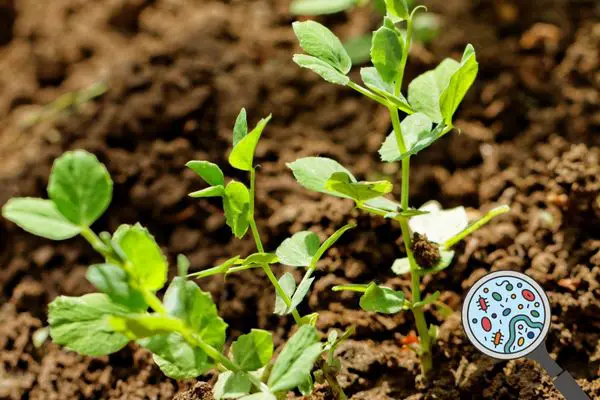
For example, nitrogen-fixing bacteria live in the soil and can help plants by providing them with nitrogen.
Nitrogen is an important nutrient for plants, and it is often in short supply in the soil. These bacteria help to replenish the nitrogen, making it available for plants to use. This process is called nitrogen fixation.
These bacteria are not quite decomposers though, as they get their nitrogen from the air, but they do depend on decomposition processes for their general nutrient acquisition!
Some plants, like the Venus Fly Trap, can catch their own food in the form of insects to extract these inorganic chemicals without the need of decomposers to help them.
They do this because the soil around them is often poor in nutrients and/or decomposers to make them accessible to the plant. I wrote a whole article about the Venus Fly Trap if you are interested.
What is the difference between decomposers and other heterotrophs?
Decomposers feed on dead and decaying matter, whereas other heterotrophs usually feed on live organisms.
However, while animals may feed on dead organisms they are not always decomposers like bacteria and fungi are. Some animals are scavengers that extract energy from other dead animals but they do not complete the last step of the carbon recycling.
Scavengers, although they play an important role in the decomposition process, are not considered decomposers, because they only reduce the size of carcasses, they do not decompose them into inorganic nutrients that feedback to producers.
Scavengers generally feed on larger pieces of carrion than detritivores. Detritivores, as the name suggests, generally feed on fragments of organic waste.
The difference between detritivores and true decomposers is that true decomposers digest their food externally, not internally.
Conclusion
In conclusion, decomposers are heterotrophic organisms that feed on dead and decaying matter.
While all decomposers are heterotrophs, certain autotrophic bacteria play an important role in the decomposition process by converting decomposed nutrients into compounds that can be absorbed by plants.
Decomposers can be divided into detritivores and true decomposers. Detritivores, like earthworms and certain insects, feed on fragments of organic waste and break them down into smaller pieces.
While detritivores certainly help the decomposition process, they do not carry it to the end – like true decomposers do!
True decomposers, like bacteria and fungi, break down organic waste into inorganic nutrients that autotrophs can absorb. By recycling nutrients in the environment, decomposers play an important role in the carbon cycle.
References
- BBC. 2022. Material cycling in ecosystems. https://www.bbc.co.uk/bitesize/guides/zg9v6yc/revision/2
- Ingham, E.R. Soil bacteria. United States Department of Agriculture website. https://www.nrcs.usda.gov/wps/portal/nrcs/detailfull/soils/health/biology/?cid=nrcs142p2_053862
- Luxmoore, M. 2021. As Siberia’s permafrost thaws, scientists marvel at the mammoth treasures beneath. Radio Free Europe Radio Liberty. https://www.rferl.org/a/siberia-permafrost-thaw-mammoth/31342051.html
- Callaway, E. 2021. Million-year-old mammoth genomes shatter record for oldest ancient DNA. Nature News. https://www.nature.com/articles/d41586-021-00436-x
- Kaufman, R. 2012. 32,00-Year-old plant brought back to life – oldest yet. National Geographic. https://www.nationalgeographic.com/science/article/120221-oldest-seeds-regenerated-plants-science
- Gray, R. 2020. The mystery of Siberia’s exploding craters. BBC Future. https://www.bbc.com/future/article/20201130-climate-change-the-mystery-of-siberias-explosive-craters
- Girard, M., Palacios, J.H., Belzile, M., Godbout, S., and Pelletier, F. 2013. Biodegradation in Animal Manure Management. IntechOpen Book Series. https://www.intechopen.com/chapters/45120
- Anderson, S. 2015. Decomposition in the deep sea. Oceanbites.org. https://oceanbites.org/decomposition-in-the-deep-sea/

